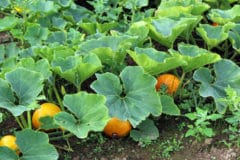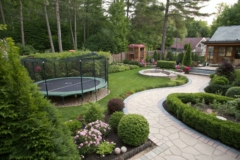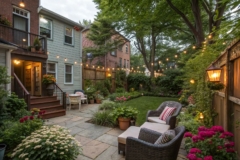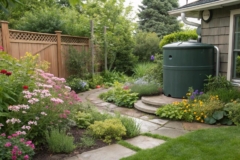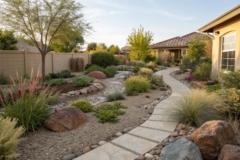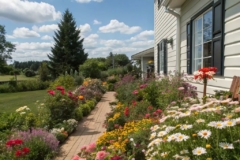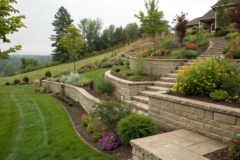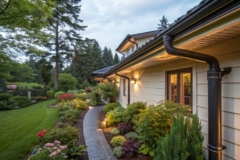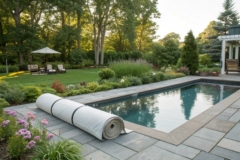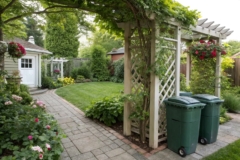1. Extend Downspouts
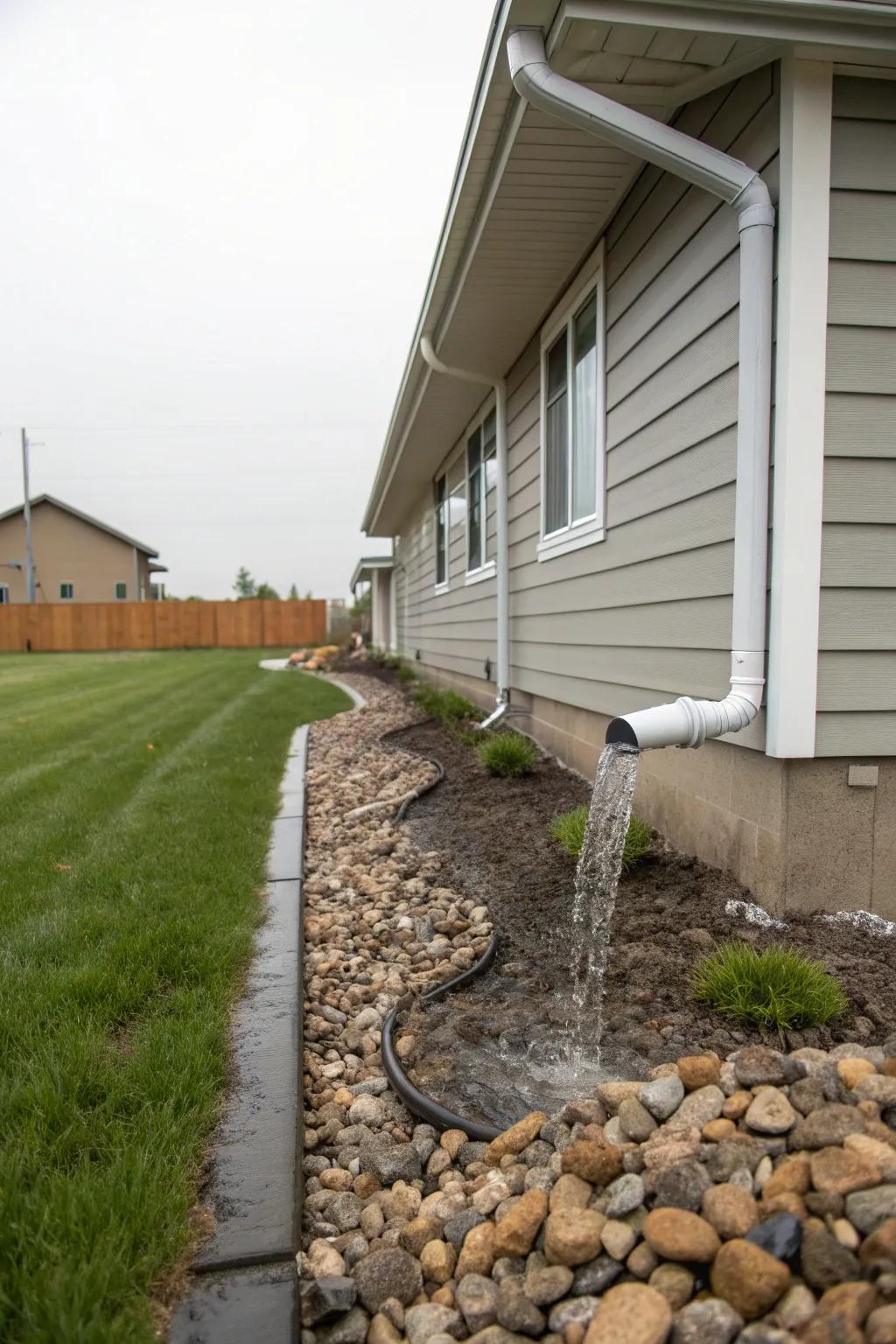
Extending your downspouts is a quick fix to prevent water from pooling near the foundation. It’s a small adjustment with a big impact, as I’ve recommended to many homeowners.
Some handy options:
- Flexible Downspout Extension: Easily extend your downspouts to direct water away from your foundation. Quick and effective.
- Rainwater Diverter Kit: Install a rainwater diverter for a simple solution to protect your home’s foundation from water.
- Splash Block: Place a splash block under your downspout to guide water flow and reduce erosion effectively.
2. Install a Dry Creek Bed
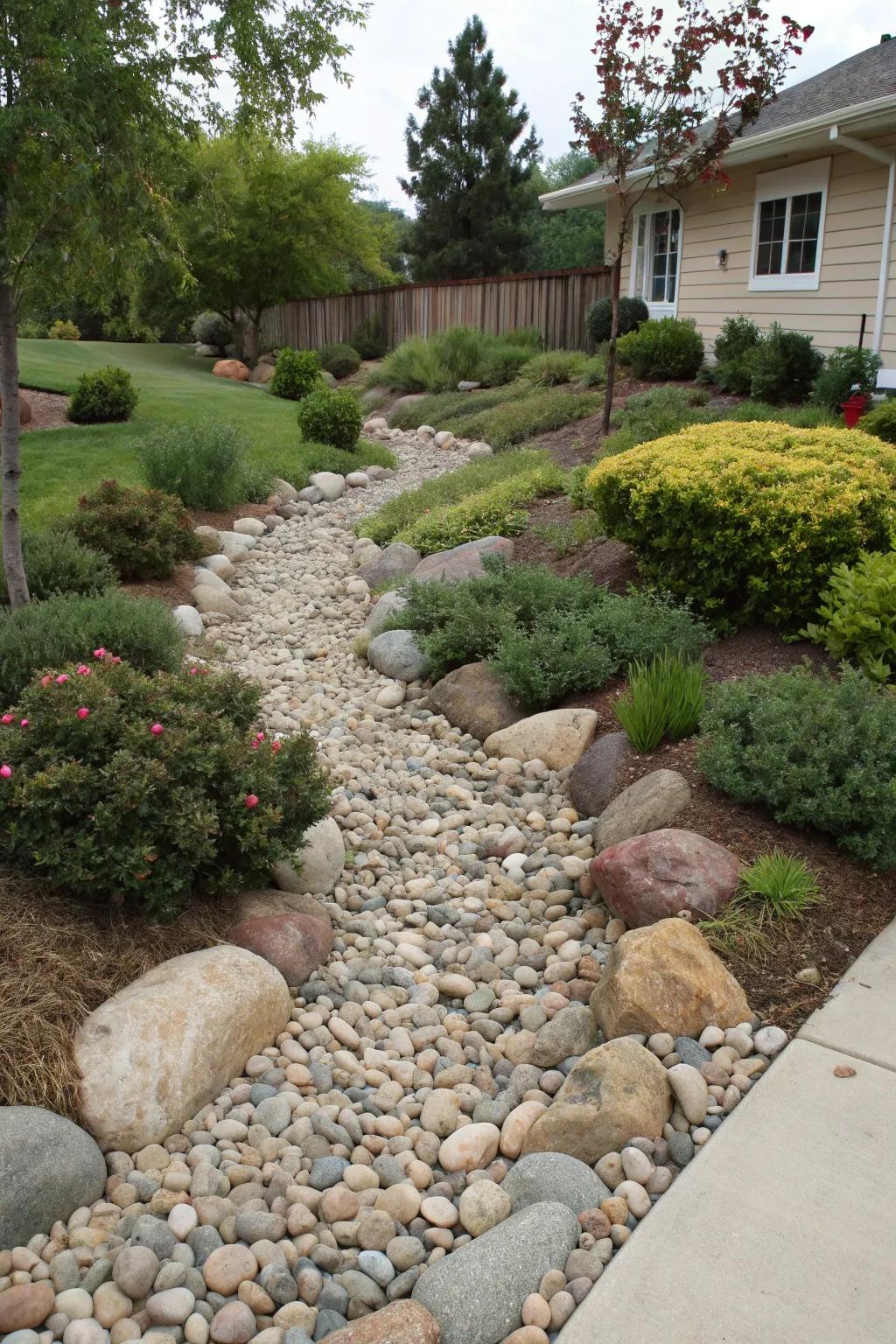
A dry creek bed not only adds a beautiful feature but also efficiently channels water away. I’ve seen how a well-placed creek bed can blend practicality with beauty in many gardens.
Some ideas to consider:
- Landscaping River Rocks: Enhance your dry creek bed with decorative river rocks. Add natural beauty and effective water flow.
- Weed Barrier Landscape Fabric: Prevent weeds in your dry creek bed. Ensure a tidy, low-maintenance, and long-lasting installation.
- Garden Edging Stones: Define your dry creek bed with garden edging stones. Keep soil in place and add structure.
3. Use French Drains
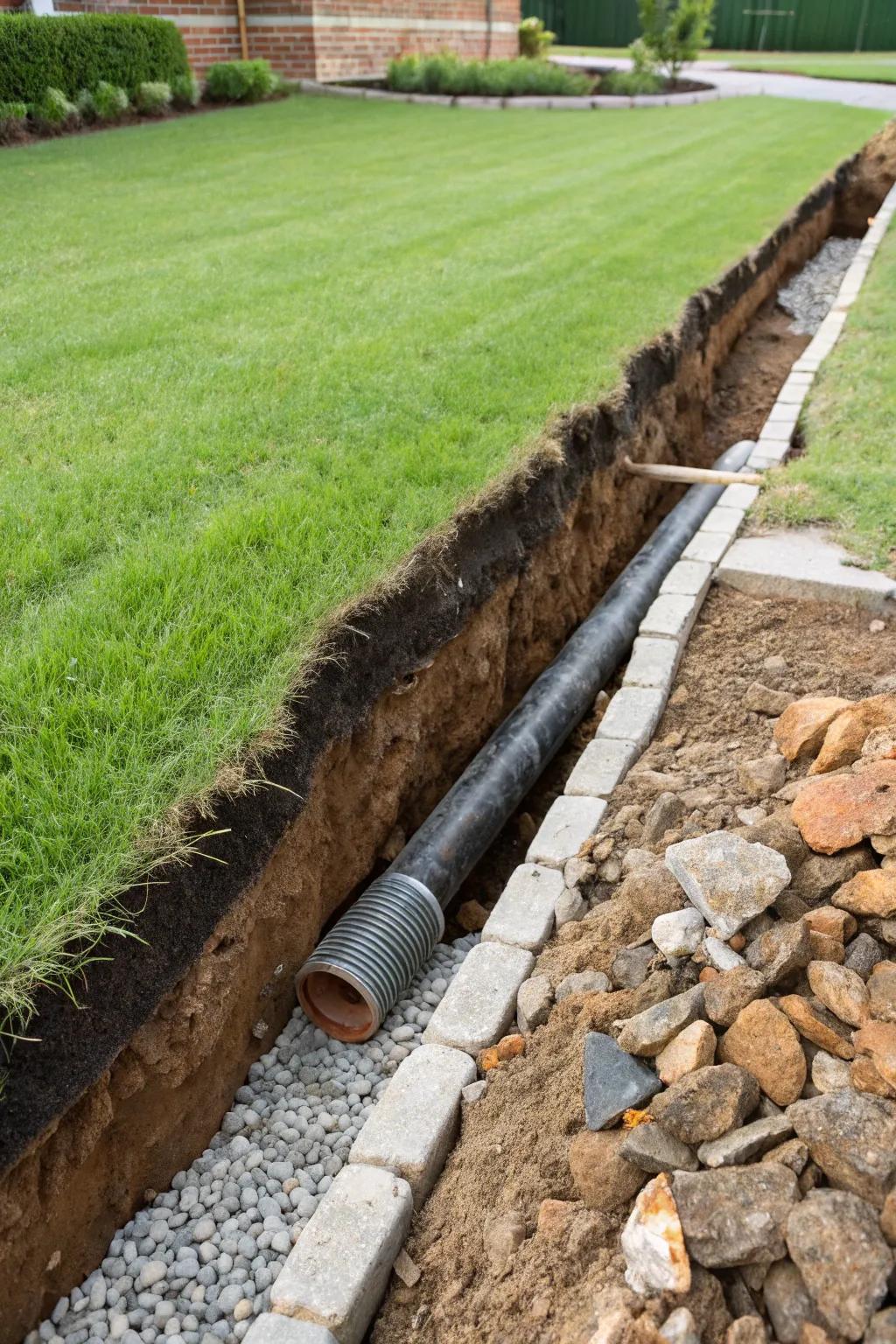
Beneath the surface, French drains work tirelessly to collect and direct water away. Many of my clients appreciate how these hidden systems keep their yards looking pristine.
A few choices to try:
- Perforated Drain Pipe: Install this durable pipe to effectively channel water away from your home’s foundation.
- Gravel for Drainage: Use high-quality gravel to ensure optimal drainage and support for your French drain system.
- Drainage Fabric: Prevent soil and debris from clogging your drain with this reliable and easy-to-install fabric.
4. Set Up Rain Barrels
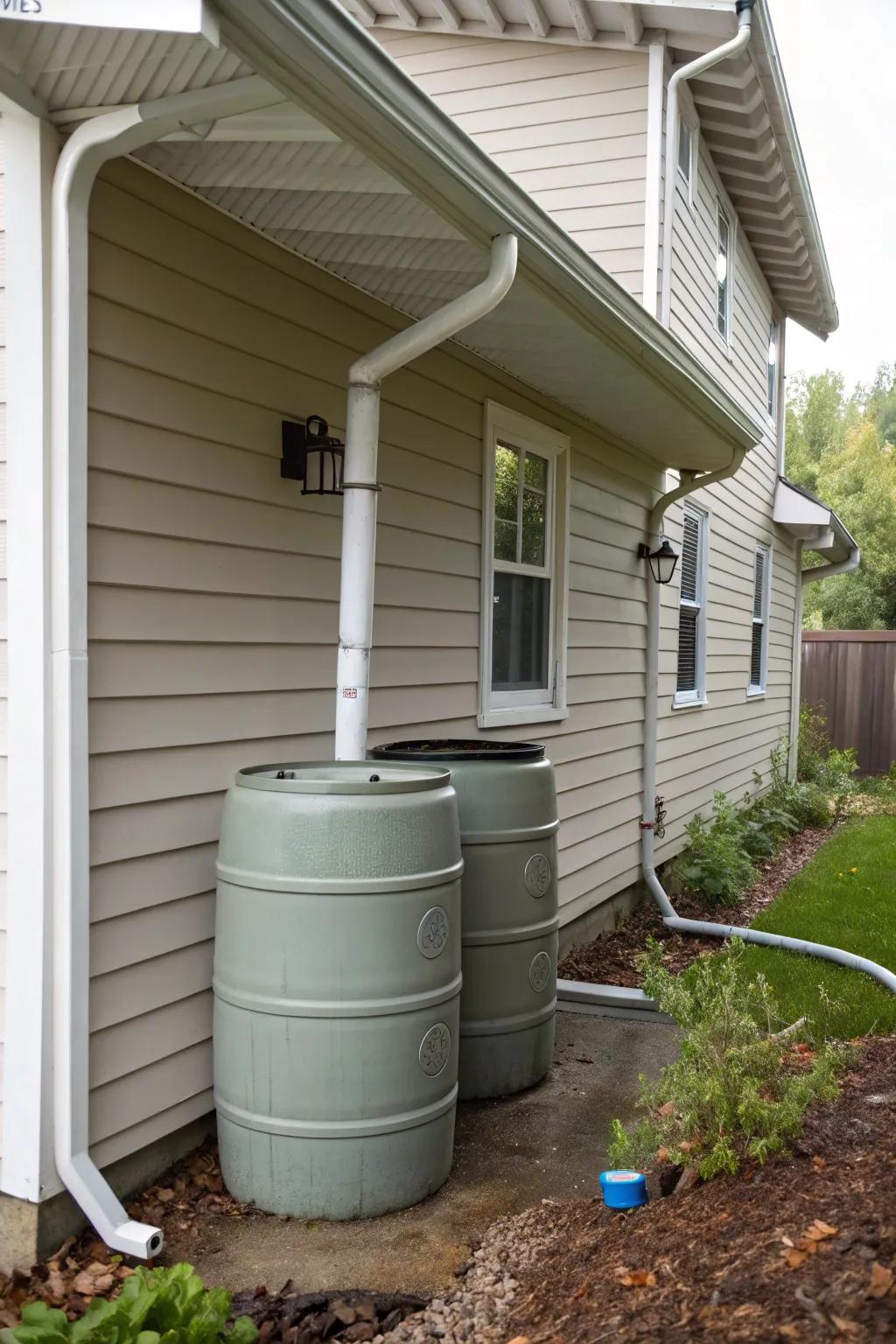
Rain barrels collect water for later use, reducing runoff and watering needs. They’re a fantastic way to conserve water, and I always recommend them for eco-friendly gardens.
Try these:
- Rainwater Collection Barrel: Easily collect rainwater for garden use and reduce your water bill effortlessly.
- Downspout Diverter Kit: Install this diverter kit to efficiently channel rainwater from gutters into your rain barrel.
- Rain Barrel Stand: Elevate your rain barrel for better water flow and convenient access to stored rainwater.
5. Plant Water-Thirsty Shrubs
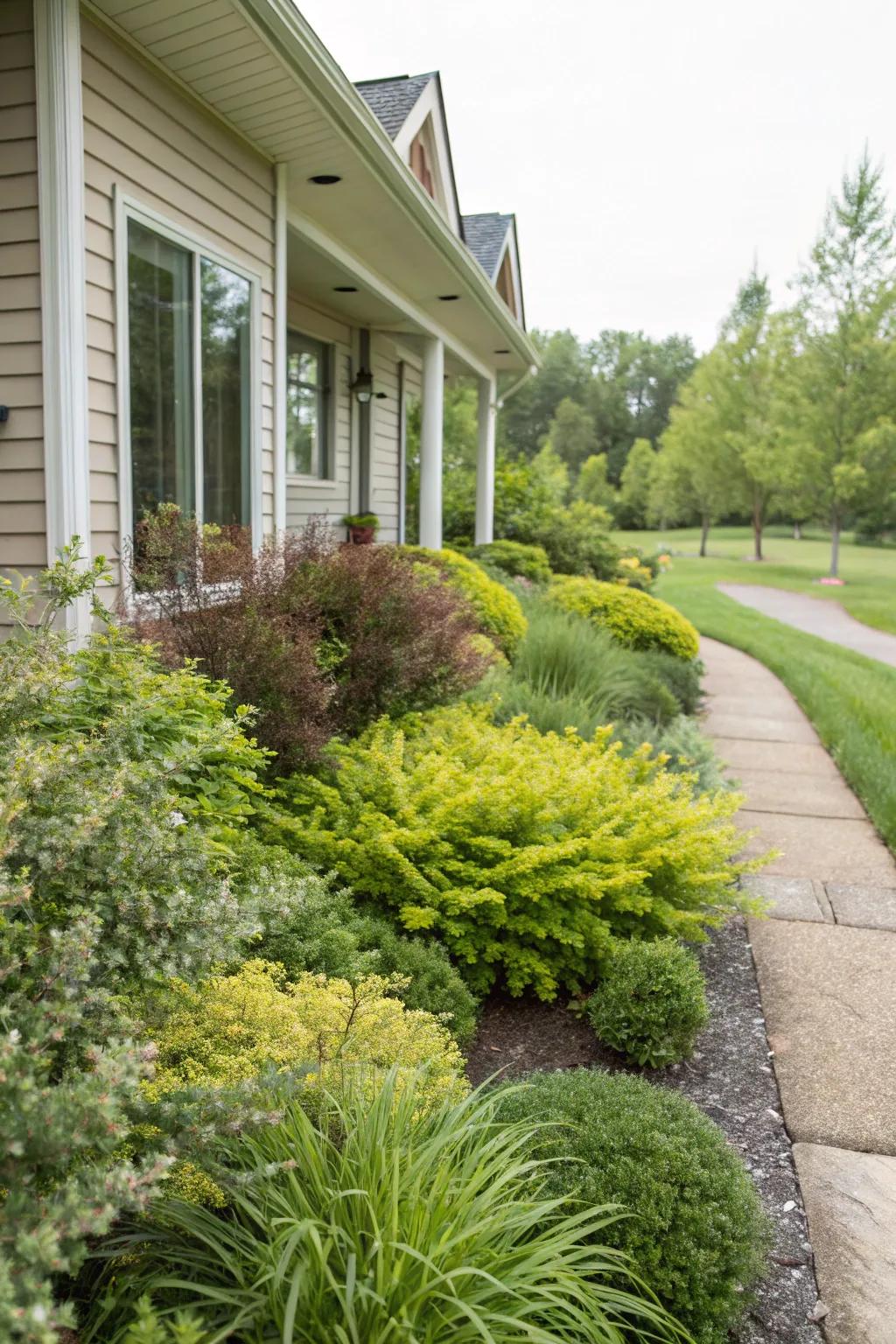
Strategically planting native shrubs can help absorb excess water and prevent erosion. In my garden designs, these plants pull double duty by adding beauty and functionality.
Products that could assist:
- Native Shrub Starter Kit: Start your garden effortlessly with this kit for easy planting and vibrant growth.
- Moisture Retentive Soil Mix: Enhance soil drainage and retain moisture effectively to support healthy shrub growth.
- Eco-Friendly Mulch: Conserve water and reduce weed growth with this sustainable mulch option for your shrubs.
6. Install Underground Drainage
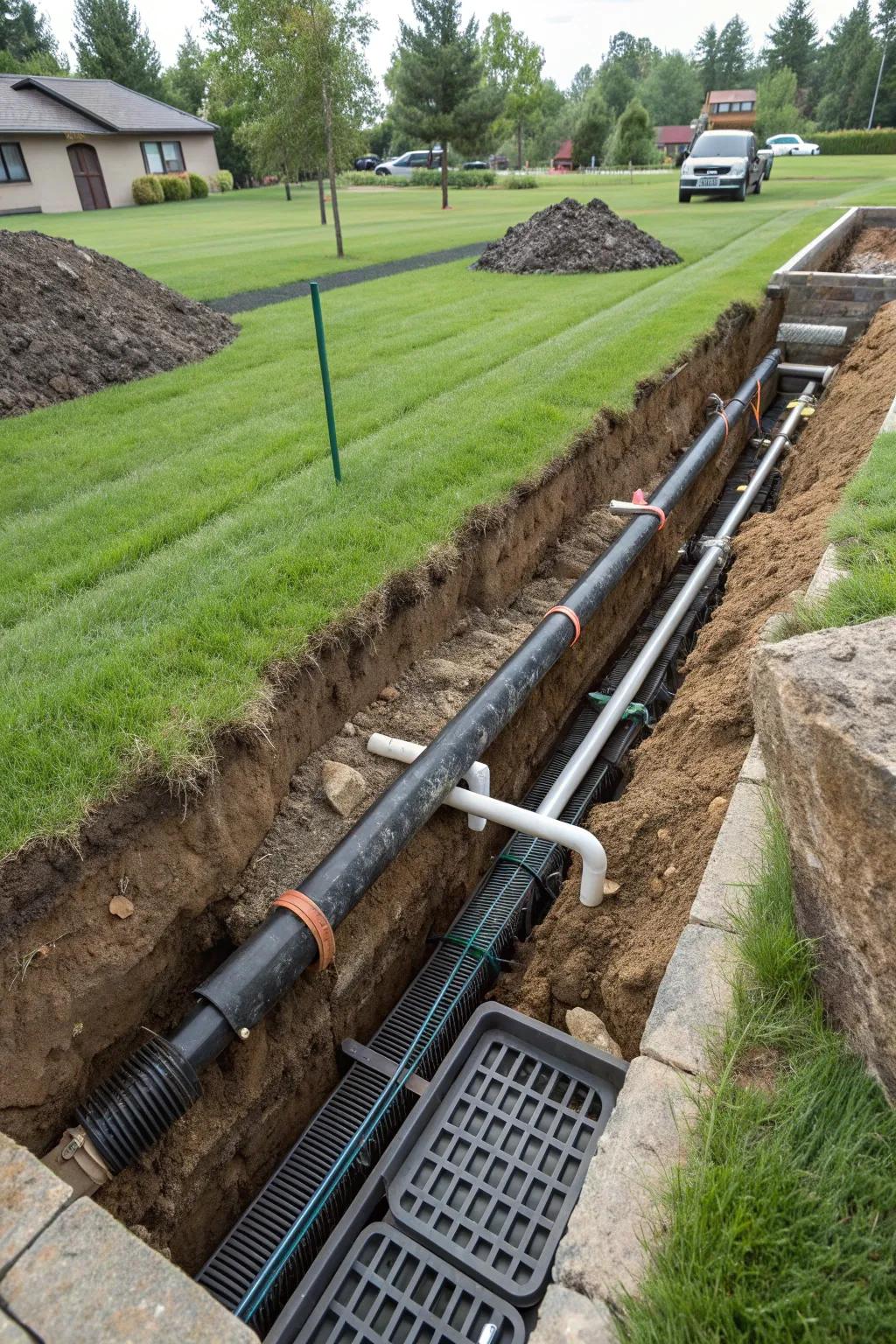
An underground drainage system discreetly handles excess water flow. It’s an advanced solution I’ve implemented in gardens where surface options are limited.
A few things you might like:
- Perforated Drain Pipe: Enhance water flow management with a durable underground perforated drain pipe. Prevent flooding today.
- Gravel for Drainage: Use quality gravel to improve underground drainage. Ensure stable and effective water diversion.
- Drainage Channel Kit: Install a comprehensive drainage channel kit. Simplify your water management with ease.
7. Use Permeable Paving
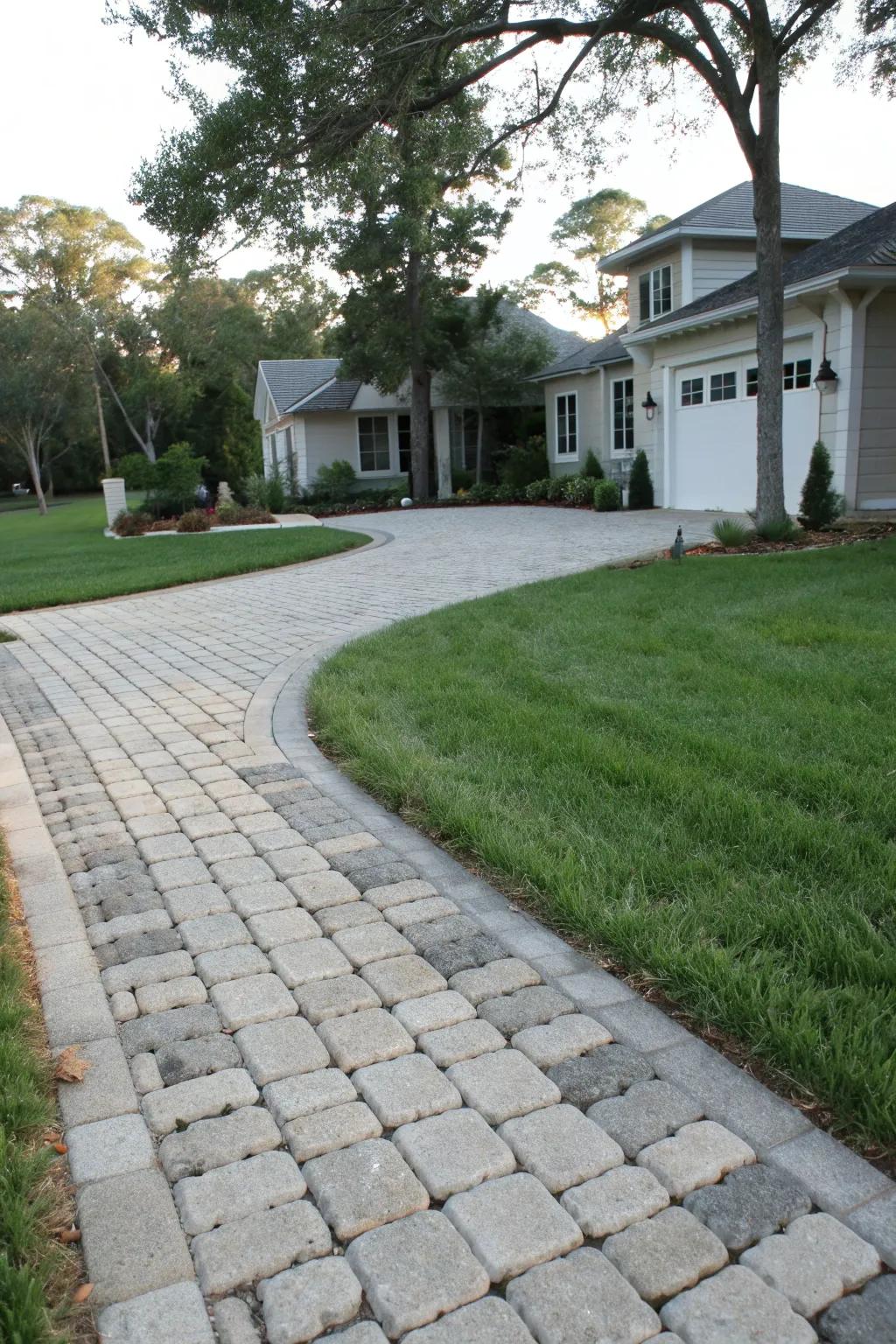
Permeable paving allows water to seep through, reducing runoff. It’s a modern solution that fits seamlessly into any landscape, as many of my eco-conscious clients prefer.
A few suggestions:
- Permeable Paving Stones: Enhance your landscape and manage runoff with eco-friendly permeable paving stones.
- Gravel Stabilizer Grid: Support water drainage efficiently with a durable and easy-to-install gravel stabilizer grid.
- Permeable Paver Base Panels: Install permeable paver base panels for improved drainage and a sturdy foundation.
8. Install Catch Basins
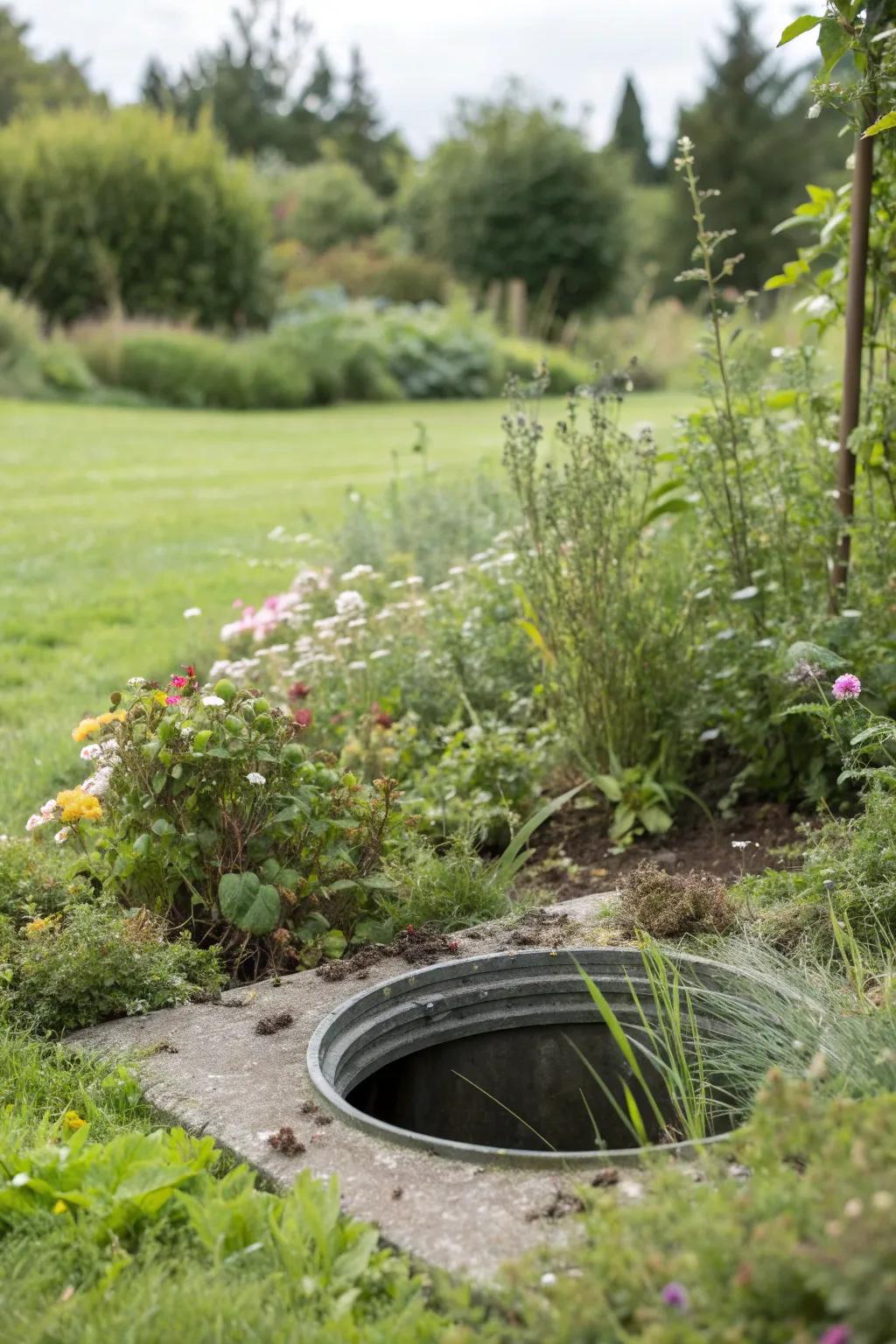
Catch basins capture runoff and prevent pooling in problem areas. They’re a smart addition to any landscape, offering an unobtrusive solution to excess water.
Might be a good match:
- Outdoor Catch Basin Kit: Prevent excess water pooling with this easy-to-install outdoor catch basin for reliable drainage.
- Grate for Catch Basin: Enhance your drainage system with this durable grate, designed to keep debris out effectively.
- Catch Basin Debris Filter: Keep your catch basin clean with this filter, stopping leaves and debris from blocking flow.
9. Install a Rain Garden
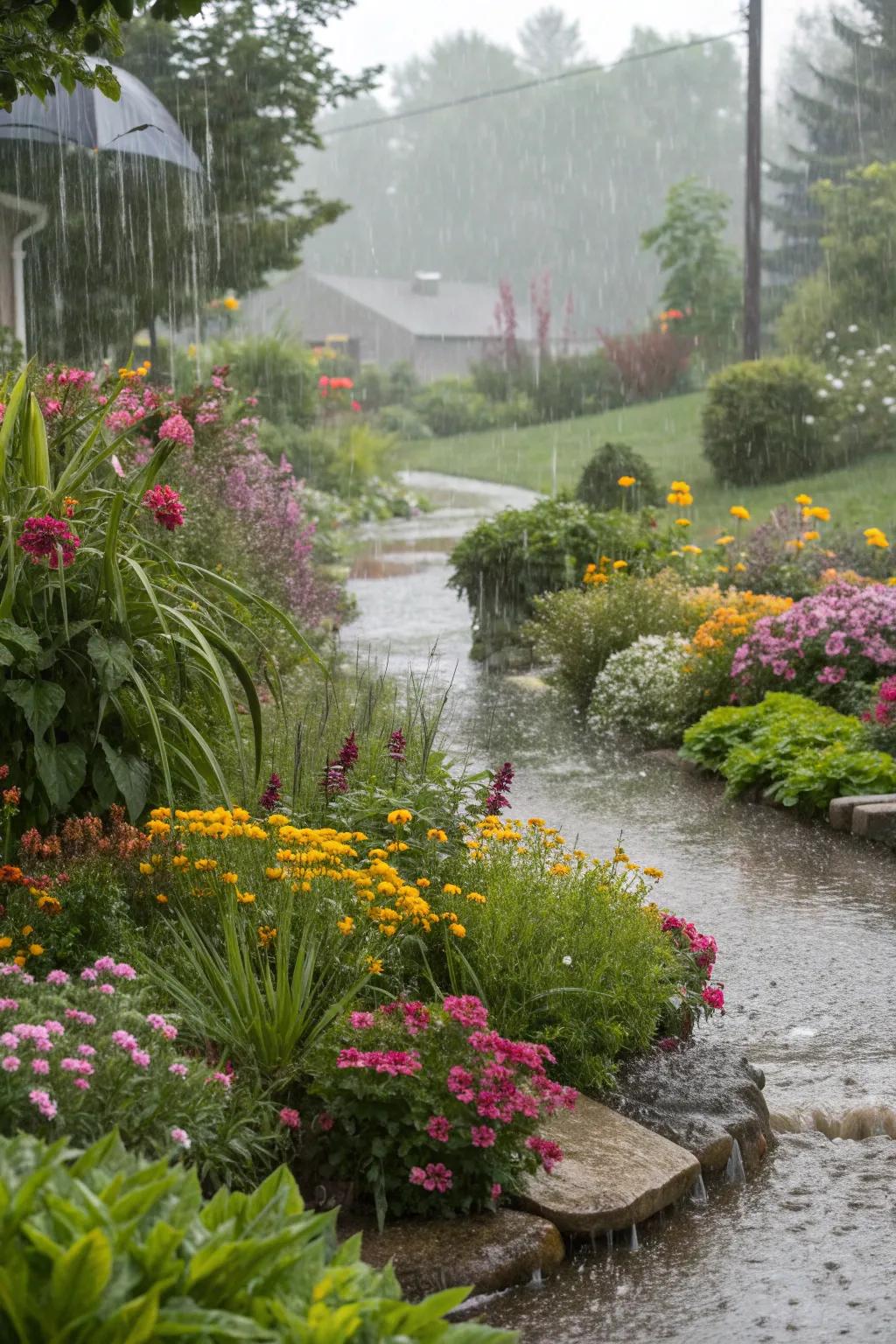
A rain garden is a stunning way to capture runoff and support local wildlife. I love designing these gardens because they turn a problem area into a lush oasis.
Possibly helpful picks:
- Permeable Landscape Fabric: Minimize soil erosion and manage runoff water effectively in your rain garden.
- Wildflower Seed Mix: Enhance your garden with diverse plant life to support local wildlife and beauty.
- Rain Garden Plant Kit: Easily start your rain garden with plants suited for absorbing excess water.
10. Create a Gentle Slope
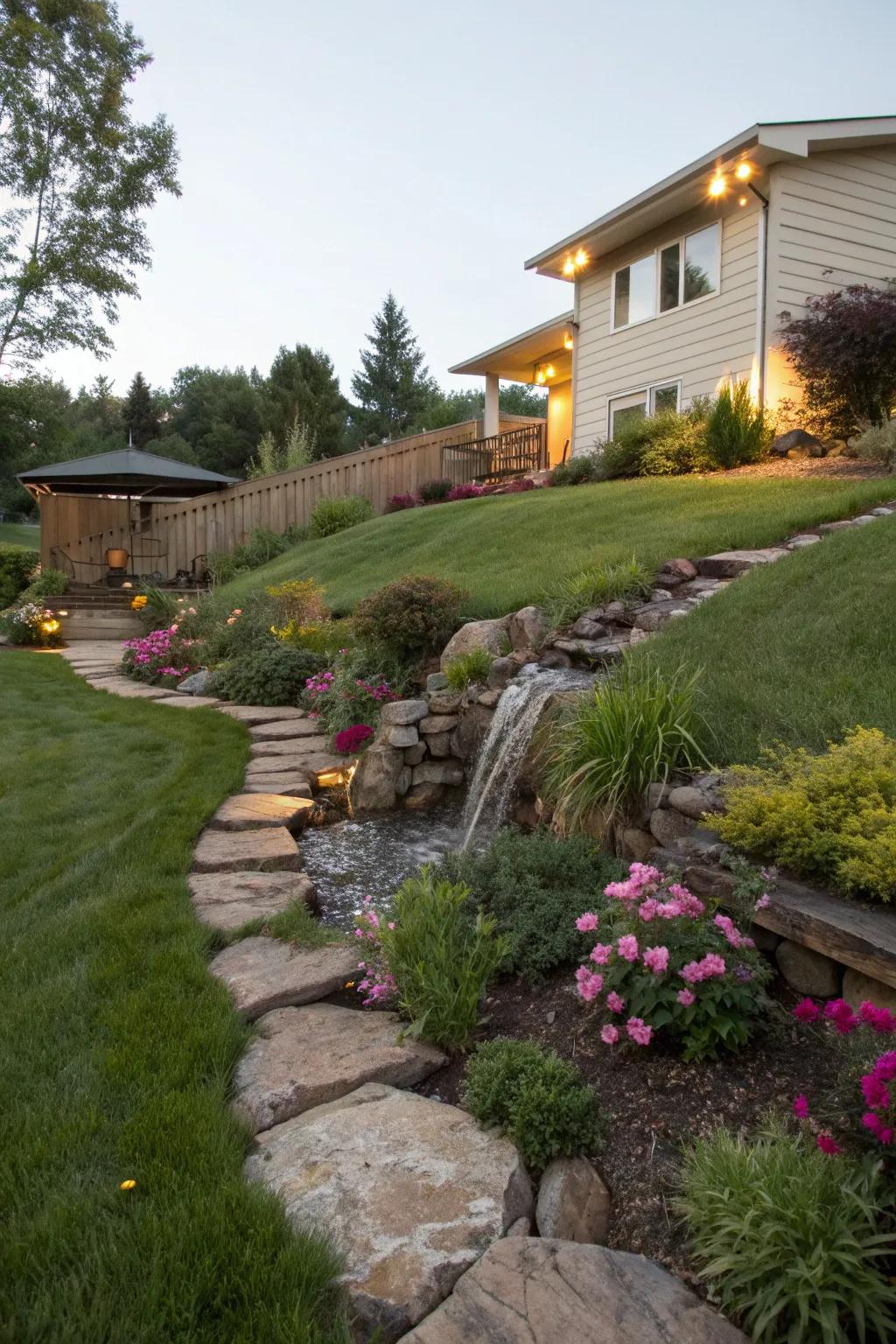
Regrading your yard is a simple yet effective way to naturally direct water away from your home. In my clients’ gardens, even a mild slope works wonders in preventing basement leaks.
Consider these options:
- Garden Shovel: Efficiently shape your garden slope to direct water away from your home. Start digging now!
- Landscape Rake: Smooth soil and level your yard effortlessly to achieve the perfect gentle slope today.
- Topsoil: Enhance ground elevation with quality topsoil, ensuring optimal water drainage from your property.
11. Build a Berm
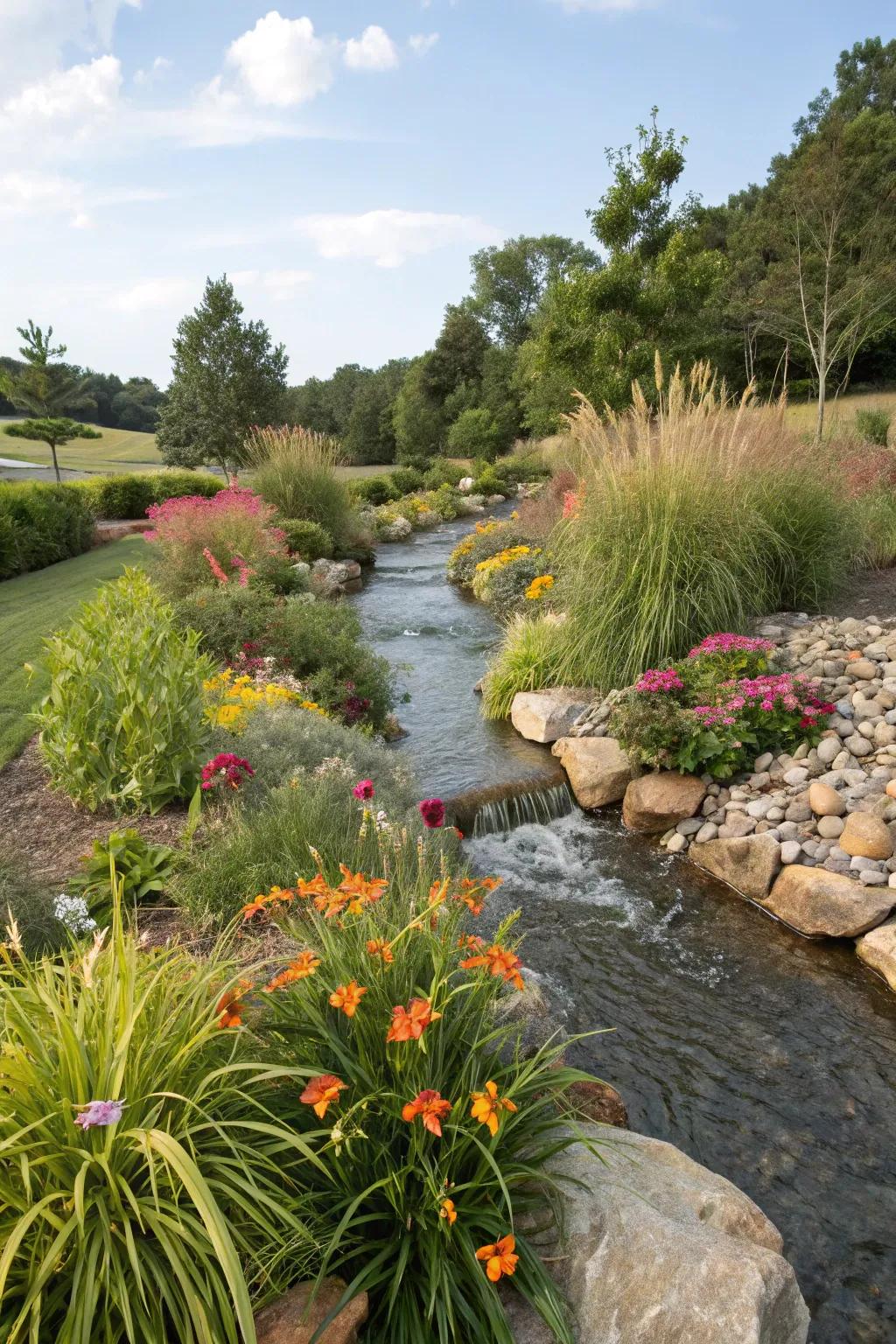
Creating a berm is a unique way to divert water while adding height and interest to your garden. It’s a versatile feature I’ve used to solve drainage issues creatively.
Items that may come in handy:
- Garden Soil Mix: Enhance your berm with nutrient-rich soil for healthy plant growth and optimal drainage.
- Decorative Garden Rocks: Add attractive stones to your berm for stability and a natural aesthetic appeal.
- Landscape Fabric: Prevent erosion while maintaining moisture balance in your berm with durable landscape fabric.
12. Install a Sump Pump
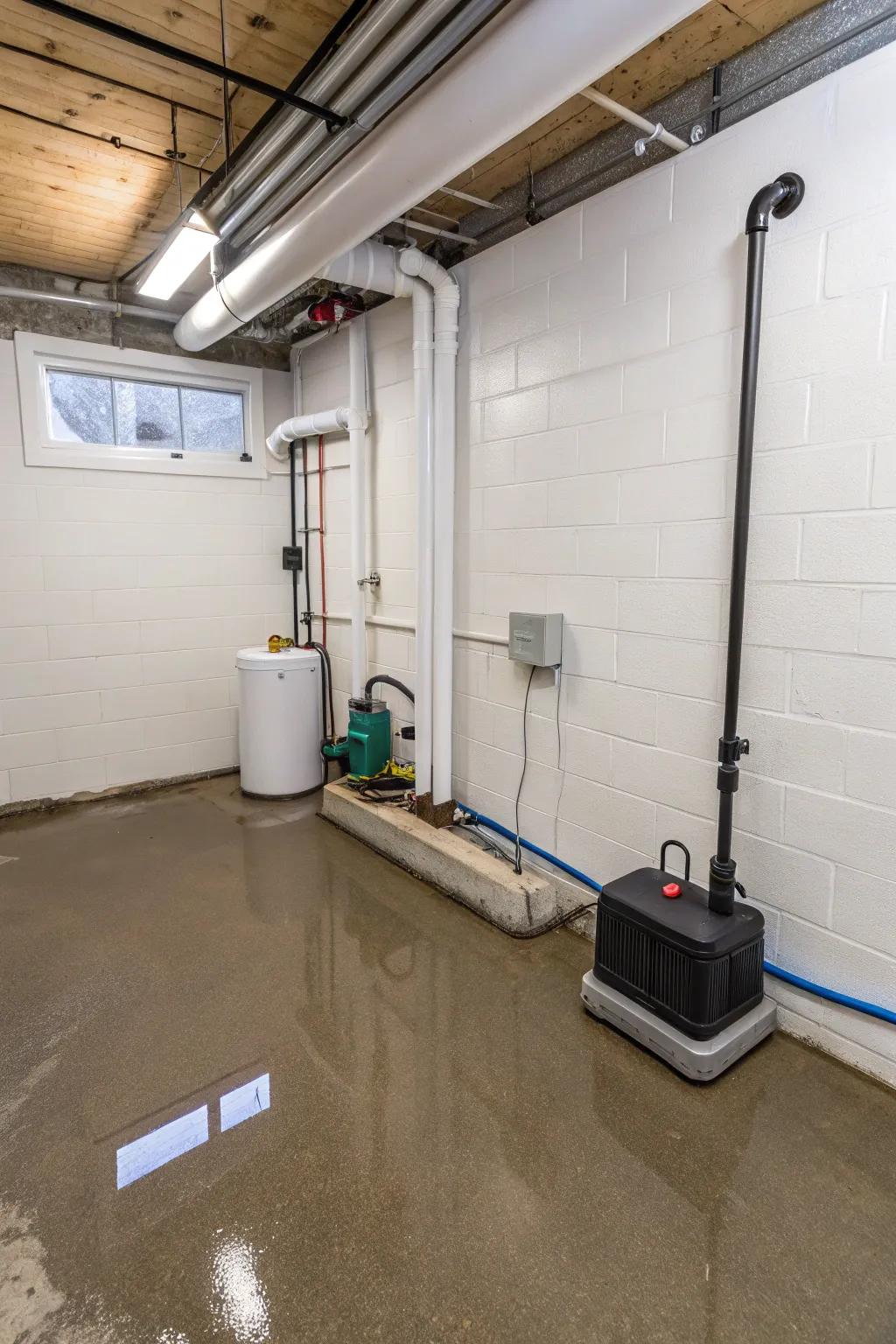
A sump pump is essential for areas prone to flooding, ensuring water is pumped away from your home. It’s a reliable backup that provides peace of mind during heavy rains.
Maybe worth checking out:
- Submersible Sump Pump: Protect your home—install a submersible sump pump to efficiently remove water accumulation.
- Backup Battery for Sump Pumps: Ensure continuous operation with a sump pump backup battery, providing peace of mind during outages.
- Sump Pump Alarm System: Stay alerted—use a sump pump alarm system to monitor water levels and prevent flooding.
13. Build Retaining Walls
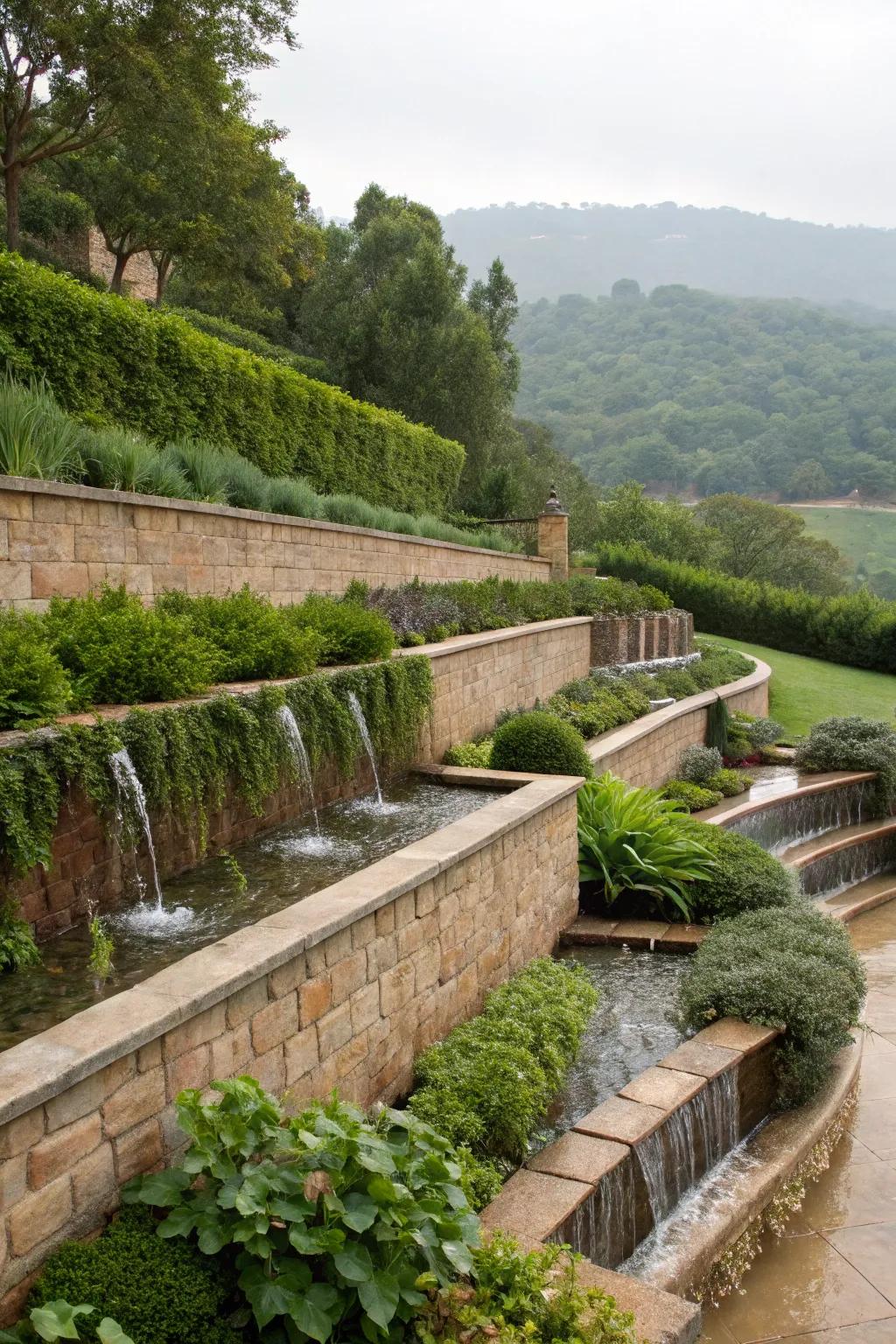
Retaining walls can protect against water by holding soil in place and redirecting flow. In hilly areas, they’re a lifesaver for both aesthetics and functionality.
May just do the trick:
- Retaining Wall Blocks: Enhance your landscape with durable blocks to construct sturdy and aesthetically pleasing retaining walls.
- Drainage Pipe: Ensure proper water flow with effective drainage pipes for your retaining wall system.
- Landscape Fabric: Prevent soil erosion by using landscape fabric behind your retaining walls for added protection.
14. Incorporate Hardscaping
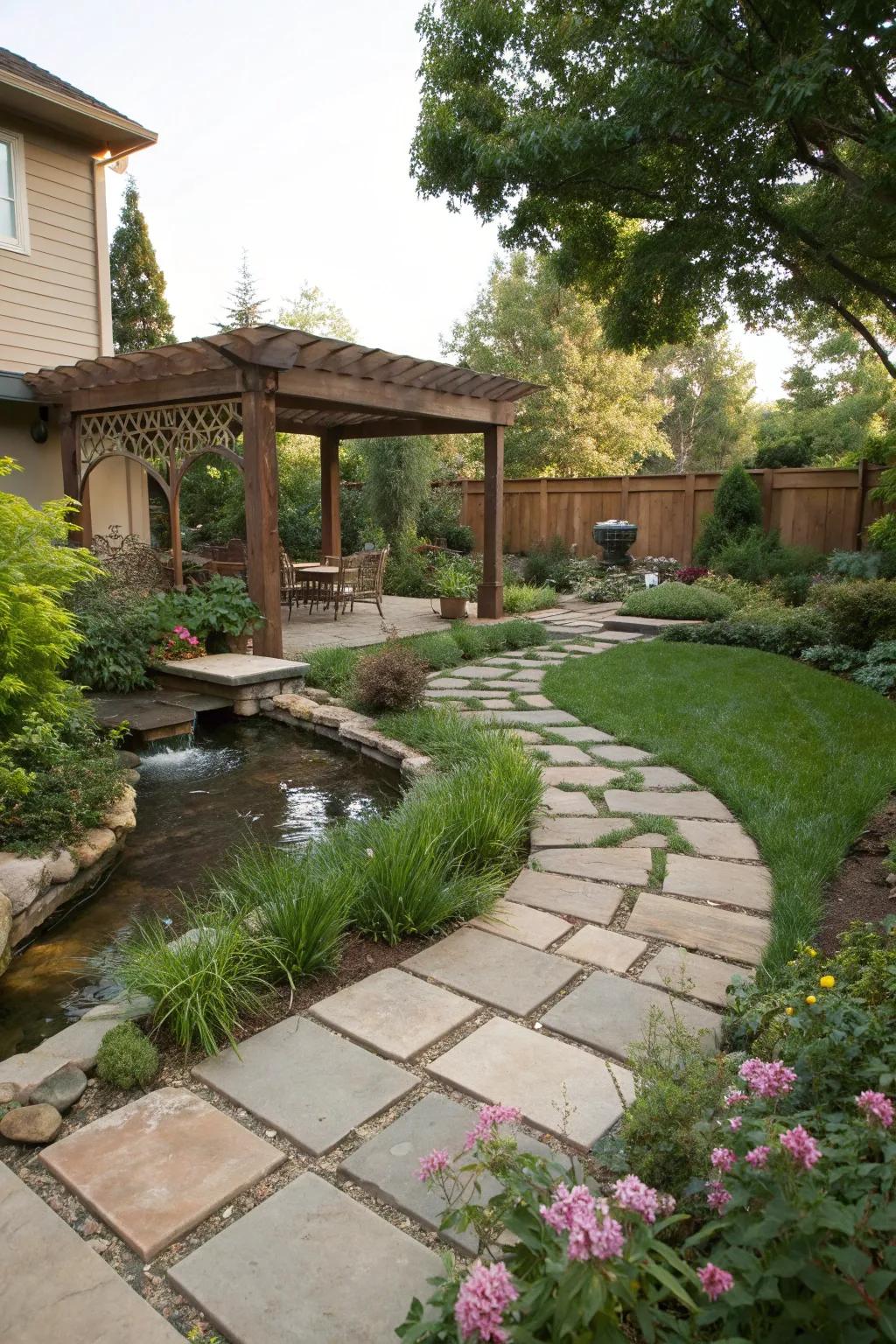
Integrating hardscaping like paths and patios can effectively redirect water. These features are not only practical but add value and beauty, as seen in many of my projects.
You might give these a try:
- Stone Patio Pavers: Enhance your outdoor space and redirect water with durable, attractive stone pavers.
- Garden Pergola Kit: Create a stunning focal point while guiding rain away with an elegant pergola kit.
- Water Feature Fountain: Add beauty and manage water flow with a charming water feature fountain.
15. Create a Swale
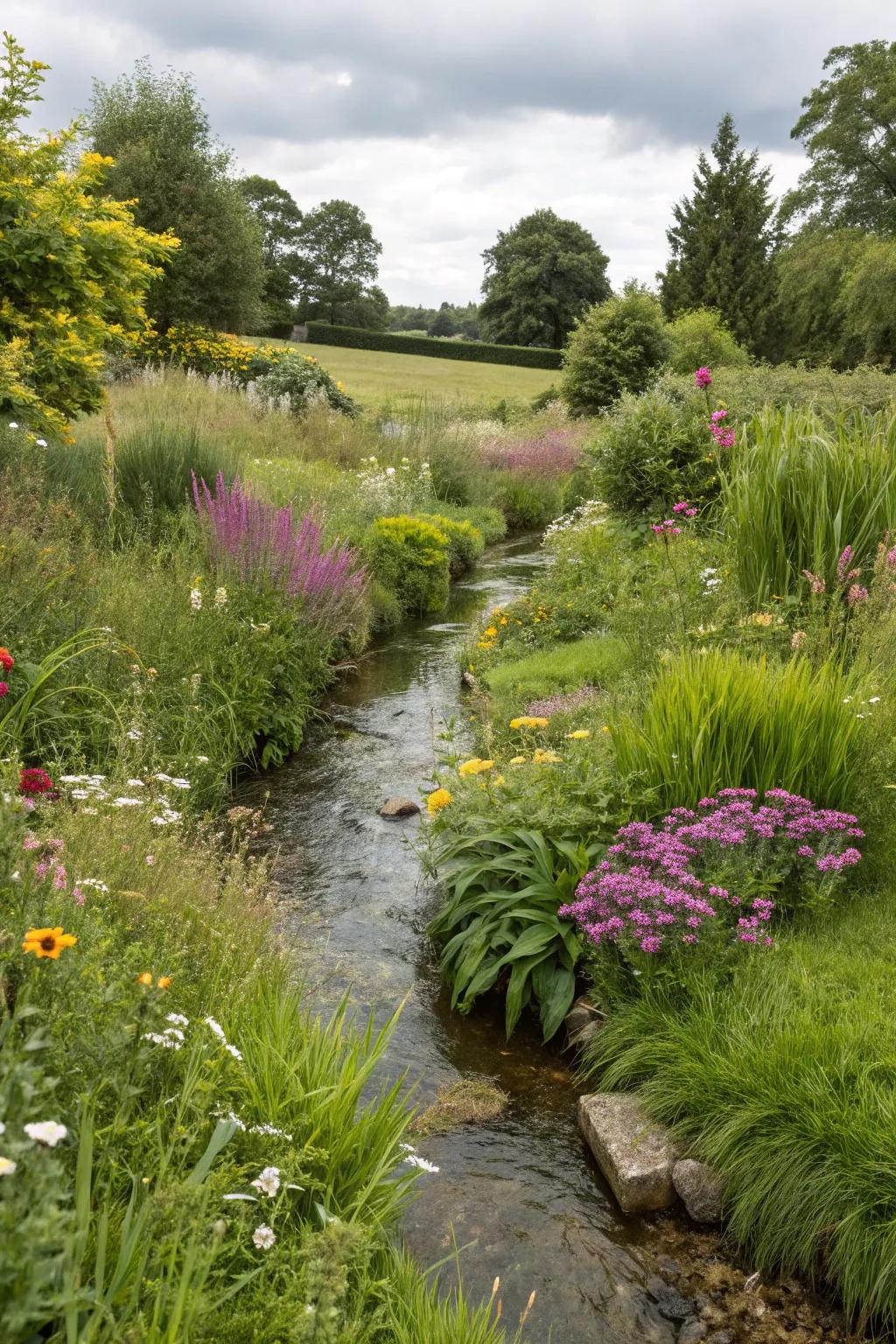
A swale is a natural trench that guides water away while allowing it to absorb slowly. It’s a gentle solution that blends into the landscape, a favorite in my sustainable designs.
Possibly handy products:
- Garden Shovel: Dig a swale effortlessly with this durable garden shovel designed for precision and comfort.
- Landscape Fabric: Prevent soil erosion in your swale with eco-friendly landscape fabric. Easy to install and effective.
- Native Wildflower Seeds: Enhance your swale’s beauty with a mix of native wildflowers. Attract pollinators and enrich the landscape.
16. Incorporate Water-Absorbing Plants
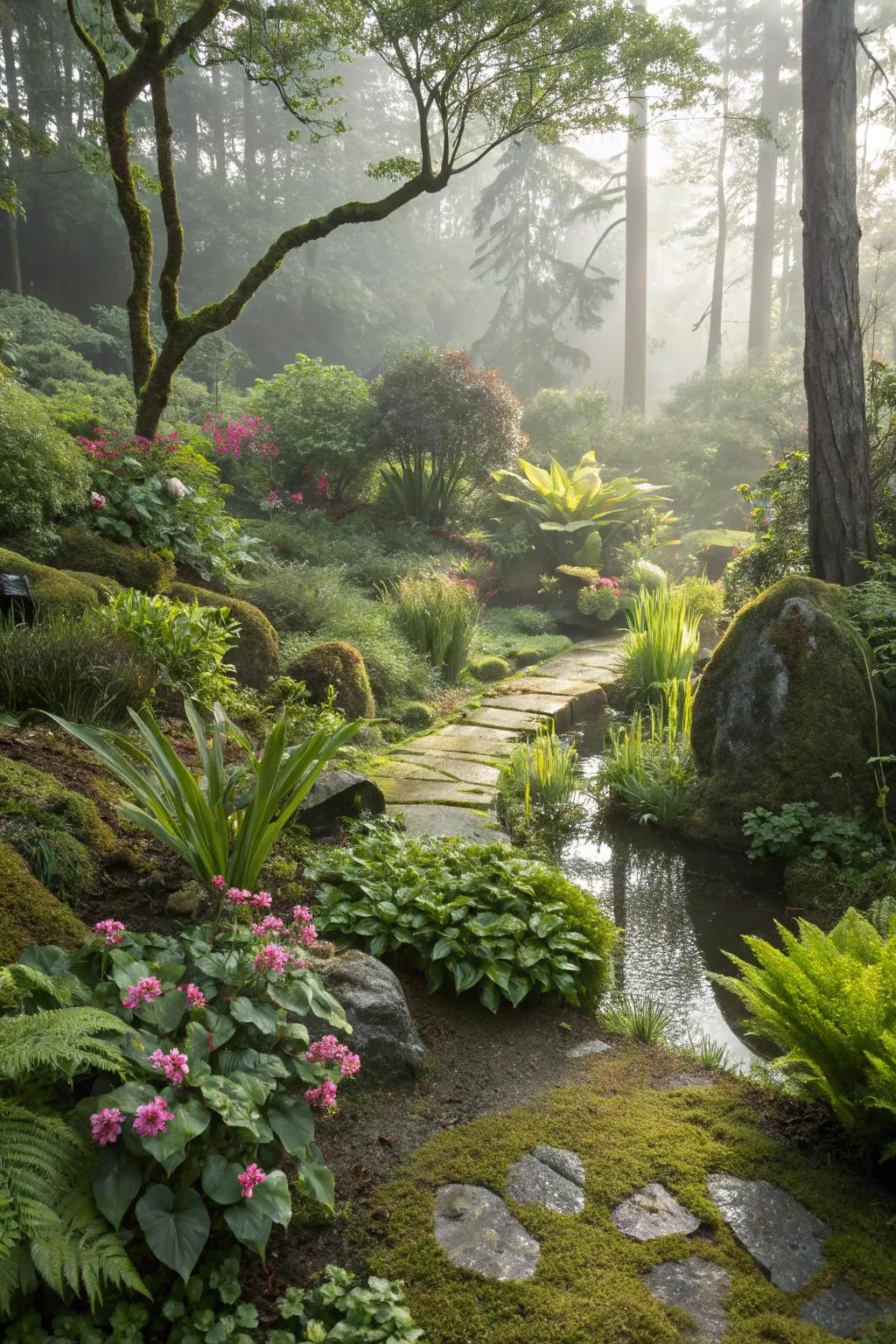
Planting water-absorbing plants in your garden helps soak up excess moisture. These plants are a natural and beautiful solution I’ve used to enhance both form and function.
You might like:
- Water-Absorbing Plant Seeds: Enhance your garden’s function and beauty by planting water-absorbing seeds for natural moisture control.
- Moisture-Loving Ground Cover Plants: Choose moisture-loving ground cover plants to effectively soak up excess water in your garden.
- Water-Absorbing Shrubs: Add water-absorbing shrubs to your landscape for a functional and attractive moisture solution.
17. Utilize Mulch
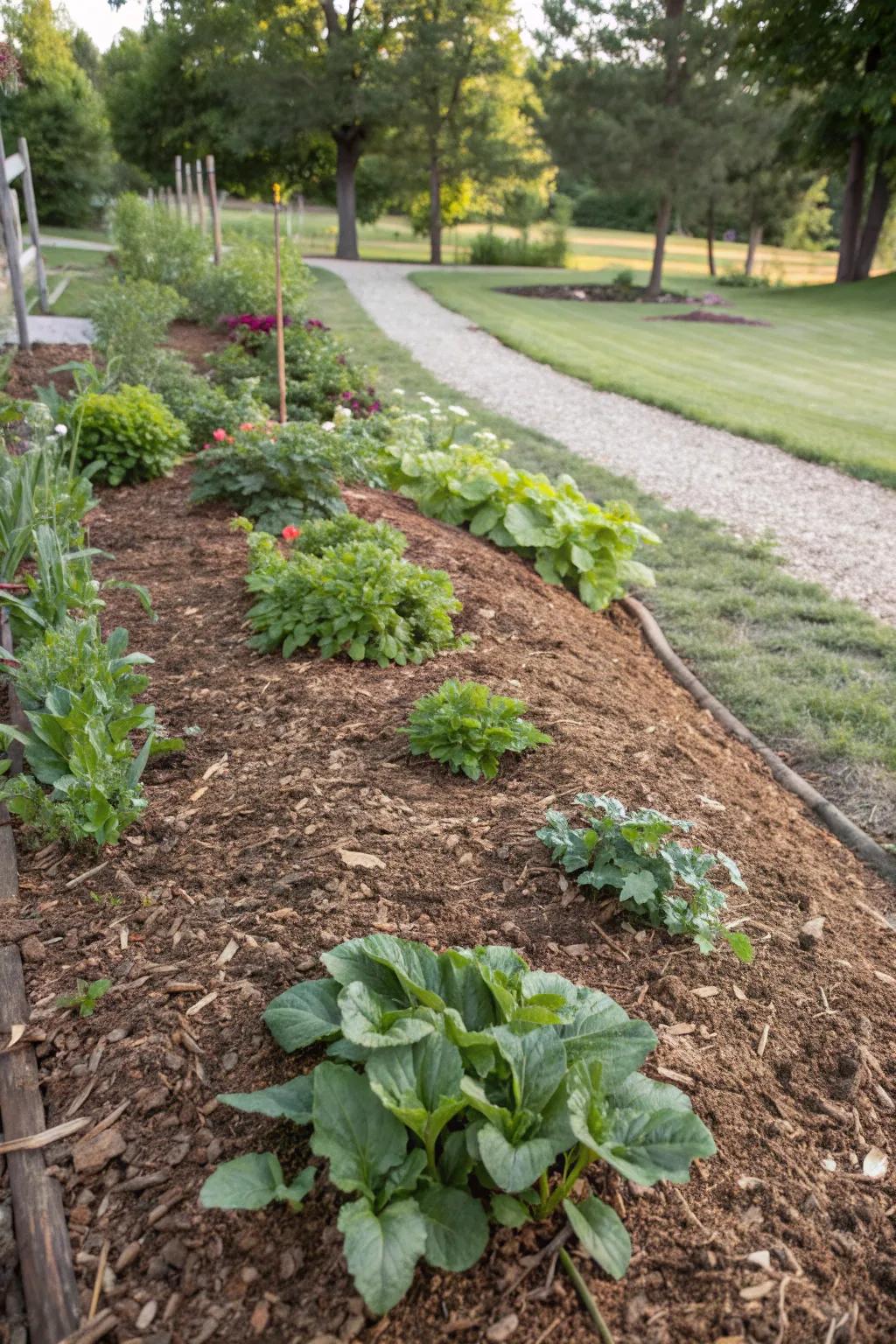
Applying mulch around your garden beds improves water retention and prevents erosion. It’s a simple tip I always share with clients for healthier, more resilient gardens.
Check if these fit your needs:
- Organic Garden Mulch: Boost water retention in your garden with organic mulch and reduce soil erosion effectively.
- Bark Mulch: Enhance your garden’s resilience and aesthetic with natural bark mulch for better soil health.
- Cedar Mulch: Use cedar mulch to naturally deter pests while improving moisture retention in your garden beds.

